Chief Operating Officer
Aman spearheads business operations, strategic execution, and cross-functional alignment to drive sustainable growth.
Still, think cloud cost optimization is just a technical matter? Well, not anymore. As cloud adoption has accelerated, so have cloud expenses, often reaching a point where these rising costs become a key concern at the executive level.
Leaders have now realized that their bottom line could take a significant hit without proactive cloud cost management. As a result, cloud cost optimization has made its way to the boardroom. Based on a survey of 450 organizations globally, the Everest report highlights that senior leadership, including SVPs, VPs, Directors, CIOs, and CTOs, actively participates in FinOps decisions (12% representation from business and management leaders).
Cloud cost optimization is a proactive and strategic process that goes beyond simply cutting costs. It’s about getting maximum value from cloud investments through a mix of smart allocation, strategic planning, and resource management.
Here’s what cloud cost optimization typically involves:

Each application or workload in a cloud environment has its own unique demands, and these demands change as the application evolves. A big part of cloud cost optimization is understanding these requirements—balancing performance thresholds with cost efficiency to ensure resources meet organizational needs without unnecessary expense.
Cloud cost optimization isn’t a one-and-done deal; it’s a continuous process, of adapting to the ever-shifting landscape of cloud pricing and service options. It’s about keeping cloud investments efficient and aligned with your business’s needs, so you’re not just saving money—you’re making your cloud work smarter for you.
Cloud cost optimization offers multifaceted benefits that impact both financial and performance aspects as well as the long-term and short-term goals of your business.
Having granular visibility on cloud cost is the first and foremost important step towards cloud cost optimization. Without this, tracking exact cloud spend across teams, services, or applications is challenging. The process of cloud cost optimization offers the granular insight needed to see precisely where your funds go, enabling clearer budgeting, better financial forecasting, and informed decision-making on resource allocation.
Actionable Advice: Leverage Cloud Cost Visibility Platforms like CloudKeeper Lens for precise cloud cost forecasting by providing insights on monthly forecast & daily cloud cost breakup, giving you a clear picture of where your budget is going.
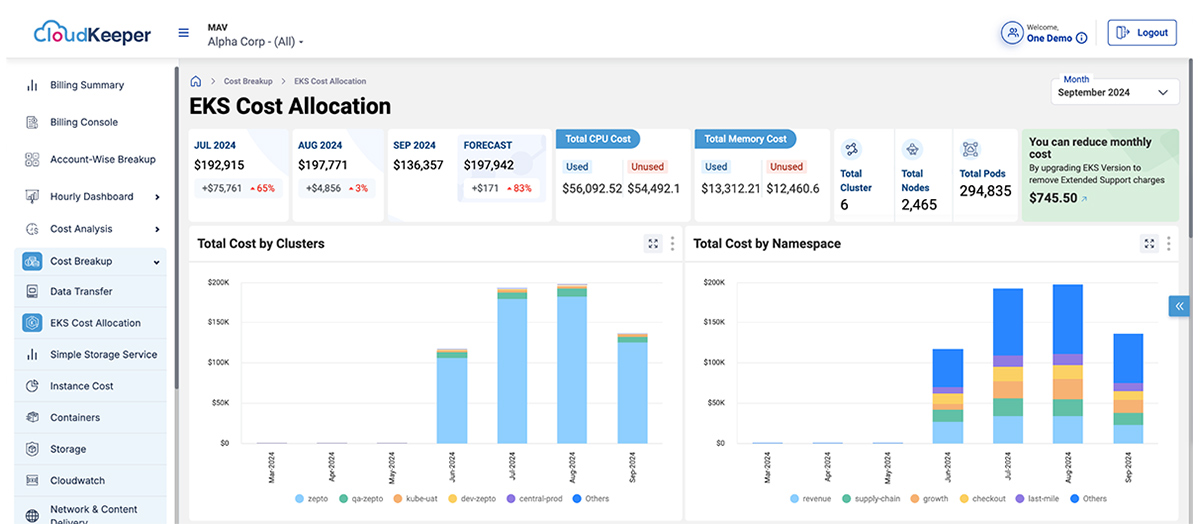
For many businesses, costs can spiral when resources are over-provisioned, underused, or left running after projects wrap. Effective cloud cost optimization helps identify these idle resources and eliminate redundancies, ensuring your cloud environment operates leanly without sacrificing performance.
For digital native companies, keeping cloud costs lean directly impacts gross margins, freeing up capital for growth initiatives like product innovation or expansion. With optimized cloud spend, companies gain a significant advantage—lowering operational expenses while maintaining scalability and resilience.
Cloud cost optimization promotes a cost-conscious approach to development, with engineers and teams aware of real-time cost impacts. For example, if any company is rapidly expanding its engineering team, unmonitored cloud usage can lead to runaway costs. By fostering cost awareness, teams are more likely to make smart choices that align with budget goals, avoid waste, and keep spending under control as new features and infrastructure are added.
With cloud cost optimization, resources are allocated precisely where they bring value. By associating costs with specific teams, projects, or products, optimization ensures that investments align with strategic priorities, allowing for more dynamic, data-driven business scaling.
Some may think that cloud cost optimization seems simple enough—just reduce waste. But once you deep dive, and get hands-on with it you realize a few common challenges can make it harder than expected to keep those costs down.
Cloud providers like AWS, Azure, and GCP have intricate pricing models with various tiers, discounts, and usage-based fees that can be overwhelming to understand. Let’s take the example of a media company For example, a media company planning for a big live-streaming event might end up with unexpected costs due to unpredictable data transfer and scaling charges. Trying to anticipate every cost component and manage them effectively can feel like navigating through cost fog.
In larger organizations, different teams might launch cloud resources on their own, often without letting others know. Imagine a product team launches a new feature without informing the finance team. Costs start piling up, but no one notices until it’s too late.
Cloud waste, in simple terms, means the cloud resources that remain unused or underused. Research suggests that 82% of global organizations waste at least 10% of their cloud spend. Idle and Unused Resources like old backups, unused databases, or development instances left running can easily be overlooked. Periodic reviews and automated alerts can help tackle this, but it remains a common pitfall.

Cloud platforms regularly release new services and pricing options, making it hard for companies to keep up. Keeping up with these changes can be an ongoing challenge.
Learn in detail about the solutions to overcome the major cloud challenges.
Now we have understood the benefits and challenges of cloud cost optimization, let’s discuss in detail Cloud Cost Optimization best practices. Think of these best practices as a roadmap to help you monitor, control, and reduce cloud expenses, all while aligning costs directly with business goals.
It's important to go beyond just the total amount when reviewing your cloud bill. Effective cloud cost optimization requires a comprehensive understanding of the various components and pricing structures involved. This insight allows you to identify where your money is being spent and make informed decisions to reduce costs effectively.
Actionable Advice: Partnering with a cloud cost optimization expert like CloudKeeper can simplify the process of analyzing your usage patterns and managing your expenses. This collaboration not only provides you with greater clarity but also offers personalized recommendations that can significantly improve your cloud efficiency.
Understanding how costs relate to your business goals is crucial. Focusing on key performance indicators (KPIs) for cloud cost optimization helps organizations create a balanced approach that saves costs,
For example, if your startup is focused on rapid customer growth, knowing the cost per feature can help determine which features are worth building.
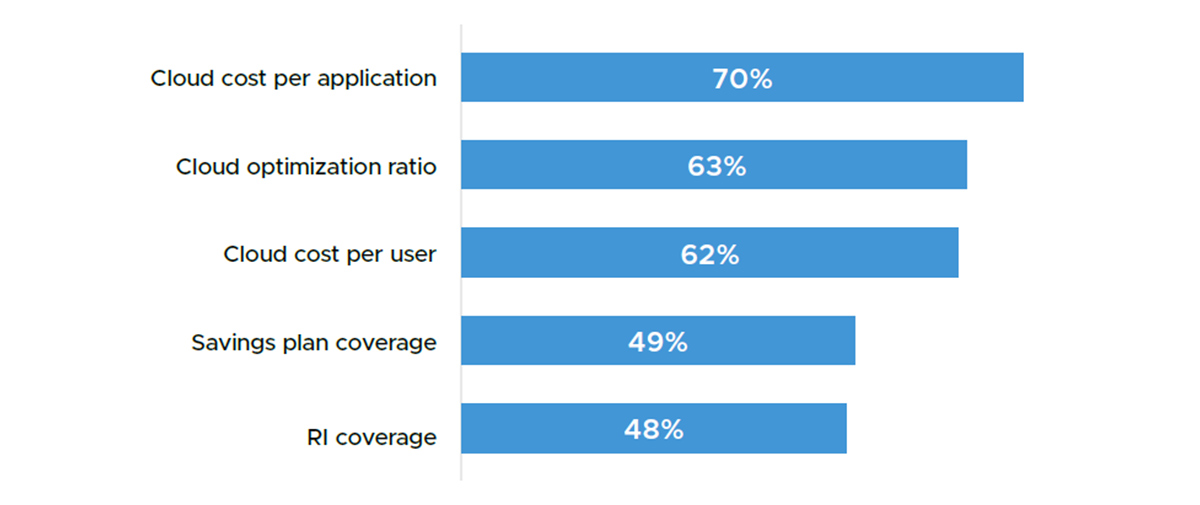
Always ensure to Keep the KPIs SMART (Specific, Measurable, Achievable, Relevant, and Time-Based). Frequent review and update the KPIs as your business evolves. The cloud cost optimization needs may change over time, so ensure your KPIs remain relevant and aligned with current priorities. We’ll discuss more on the changing trends in metrics in the later section.
Managing cloud costs effectively starts with clear budgets for each project. Instead of picking a random number, encourage open discussions between engineering teams, product managers, and executives. This helps everyone understand the specific cost needs tied to each product or feature.
For instance, if a project is part of a free trial plan versus an enterprise solution, the cost structure may vary, impacting budget requirements.
A monthly cloud budget, tailored to your organization’s goals, is essential to stay on track with your spending and optimize cloud costs. For example, if you're running AWS, you can set budget alerts to notify you when spending approaches the limit. This proactive approach helps in cloud cost optimization & managing cloud resources without unexpected cost spikes.
Ensure that everyone understands their budgets and how they relate to overall business objectives. For instance, an engineering team might have different cost requirements for a new product versus a feature upgrade. By having open discussions with leadership, teams can align their spending with broader company goals.
For example, if a company aims to enhance its user experience, the engineering team can prioritize features that align with this goal, knowing the associated costs.
One simple way to lower cloud costs is to regularly check for and delete unused and idle resources. For example, temporary servers and attached storage often stay active after tasks are done, adding unnecessary costs. Services like AWS Trusted Advisor can help identify and remove these resources.
Also, review resources with low usage, like servers running at only 10% capacity, and either resize them or combine workloads. Instead of keeping idle resources "just in case," use auto-scaling and load balancing to scale up only when needed, saving money by paying only for active use.
Get the right data, at the right time, for the right people. Everyone in the team needs different data, so tailor the information you share. Engineers may need detailed breakdowns of resource usage, while finance might focus on overall spending projections. By providing the right insights to the right teams, you empower them to make informed decisions.
With real-time cloud cost monitoring, you can see if a cost spike is temporary or ongoing. Imagine identifying an unexpected compute cost increase right as it happens—this lets you intervene promptly, minimizing unnecessary spending and potentially reallocating resources to where they generate better returns.
Regularly review and adjust your cloud resources to fit your needs. This could involve scaling down over-provisioned servers or optimizing storage options. For instance, a company that frequently launches new features might find they need more compute power during peak times but can scale back during quieter periods.
Actionable Advice: Leverage heatmaps to understand peak usage times and periods of underutilization. This helps you make informed decisions about establishing start and stop times to save and reduce cloud costs.
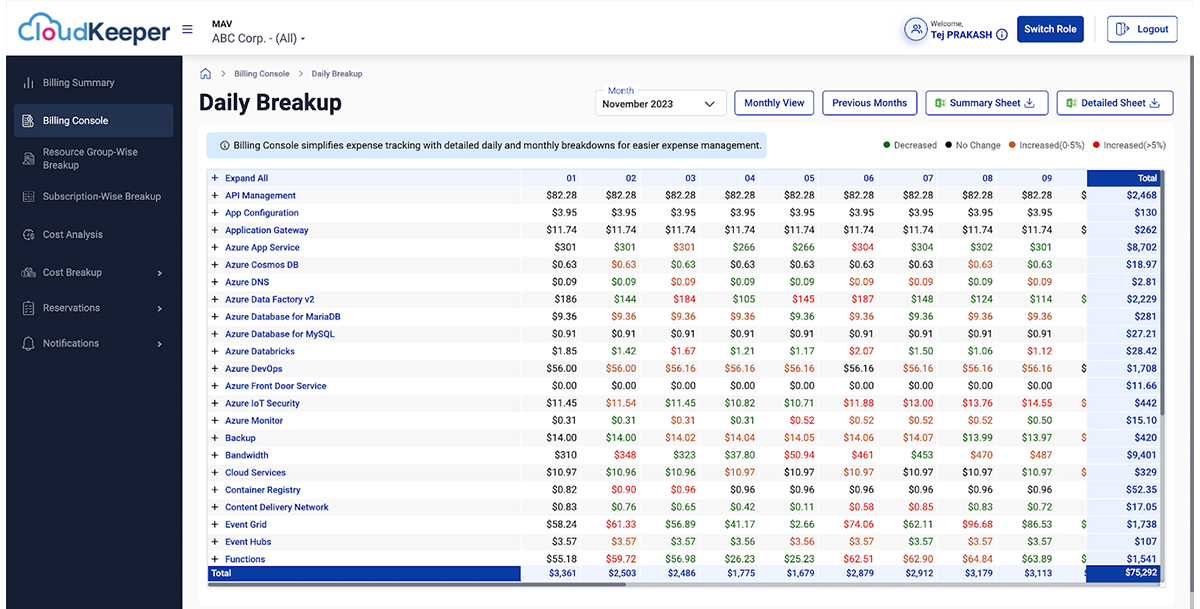
Often, cost considerations come into play only after a product launch. Instead, think about cloud cost optimization at every stage of the software development lifecycle. During planning, teams can justify budgets based on historical data, while in deployment, they can quickly identify unexpected spending.
Integrating cost data into design and build phases helps teams make informed architecture decisions. Monitoring costs throughout ensures that every engineering choice aligns with your financial goals.
Managing data across various cloud dashboards can complicate decision-making. Instead, bring critical information into a single platform as a unified source of truth. This centralized view gives teams full visibility into costs, making it easy to focus on specific resources and better cloud cost optimization.
When migrating to the cloud, consider redesigning applications to fit the cloud environment better. While it might look convenient to just lift and shift existing systems, doing so can lead to unnecessary costs. Instead, take the time to optimize applications for the cloud, ensuring they run efficiently and cost-effectively.
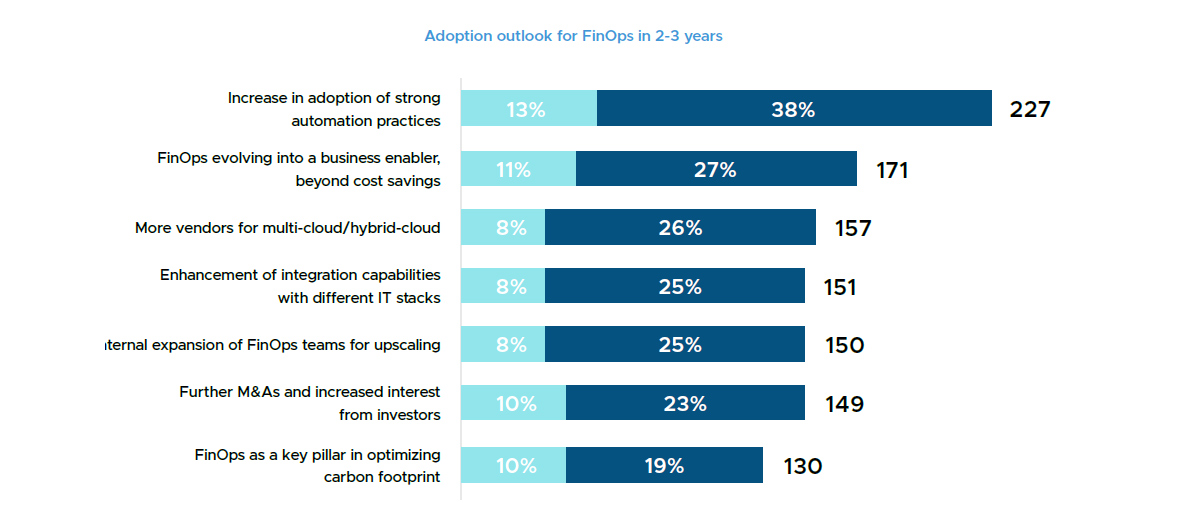
As per the Everest Reports, the next set of innovation areas within FinOps is expected to be embedded automation, provision of support for hybrid cloud environments, as well as cost linkages with business value. Here’s a rundown of some of the major emerging trends and innovations in cloud cost optimization.
Automation is now essential for cloud cost optimization and it's set to increase. By using strong automation practices, companies streamline routine processes like identifying unused resources or scaling computing capacity, making operations faster, more efficient, and less prone to human error.
FinOps is evolving from a cost-cutting tool into a broader business enabler. By providing insights into resource usage and cost distribution, it helps companies make data-driven decisions that enhance overall efficiency and business agility, ultimately supporting cloud cost optimization goals, business growth and innovation.
With the rising value of cloud cost optimization, there’s growing interest from investors and increased mergers and acquisitions (M&As) in the space. Companies offering cloud cost optimization solutions are seeing strong investment, driving more innovation and expansion in this field.
Organizations are building and expanding their internal FinOps teams to keep up with the complexity of cloud cost optimization & scaling cloud environments. By adding specialized roles and resources, companies are better equipped to handle the growing demands of cost and resource management.
As more businesses adopt multi-cloud or hybrid-cloud strategies, the demand for vendors specializing in these areas has grown. According to research, 78% of organizations prefer either a hybrid cloud or multi-cloud strategy to avoid vendor lock-in issues and adopt a best-of-breed approach toward workloads on the cloud. This also highlights the increasing demand for tools and platforms that can handle cloud cost optimization and management across multiple clouds, offering a single, unified view of expenses and enabling better decision-making for businesses.
It is emerging as a major trend, with many organizations recognizing its significant potential. AI tools offer advanced solutions for real-time cost monitoring, automated resource allocation, and predictive analytics, allowing businesses to manage cloud expenses more effectively.
The Everest Group survey found that - The current automation-led FinOps tools are falling short of expectations, prompting a demand for a more holistic approach from Cloud FinOps providers. The growing trend toward end-to-end cloud FinOps Service Providers is driven by the need for a holistic approach to cloud cost optimization. Furthermore, end-to-end Cloud Providers address this demand by offering a complete suite of services that cover every aspect of FinOps, from consultation to implementation.
Understand in detail why end-to-end Cloud Cost Optimization Partners are leading the way.
Over 70% of organizations rely on the dated metric of tracking cloud cost per application. This approach overlooks crucial aspects like overprovisioned resources and continuous wastage. As the market matures, the cloud cost optimization metrics are expected to evolve. Future metrics may encompass engineering costs, relevant cost data availability, business value alignment with costs, and enhanced cost visibility granularity.
FinOps, initially focused on managing cloud expenses, is now also helping companies reduce their environmental impact. Tracking and optimizing cloud resources not only cuts costs but also lowers carbon emissions, making FinOps a key player in sustainability.
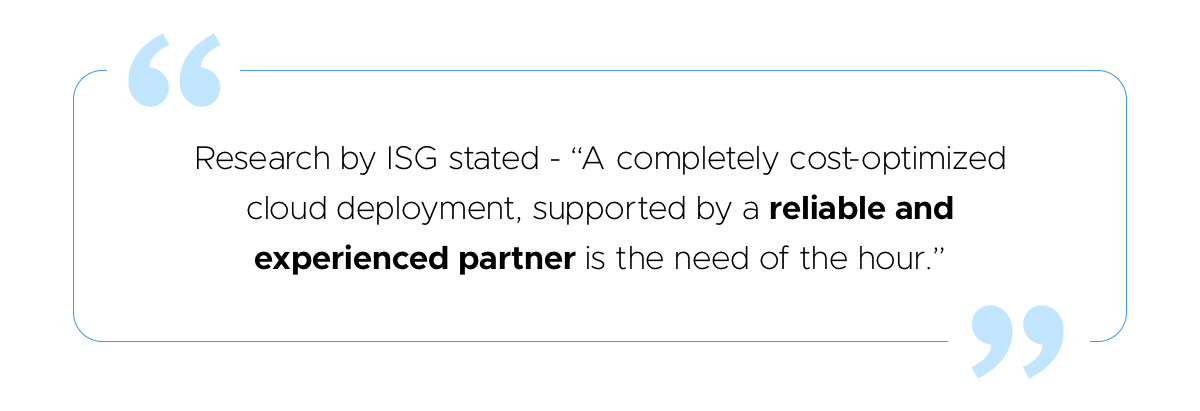
The cloud cost optimization vendor landscape offers various types of vendors that help organizations manage and reduce cloud costs. Here’s a breakdown of the primary types:
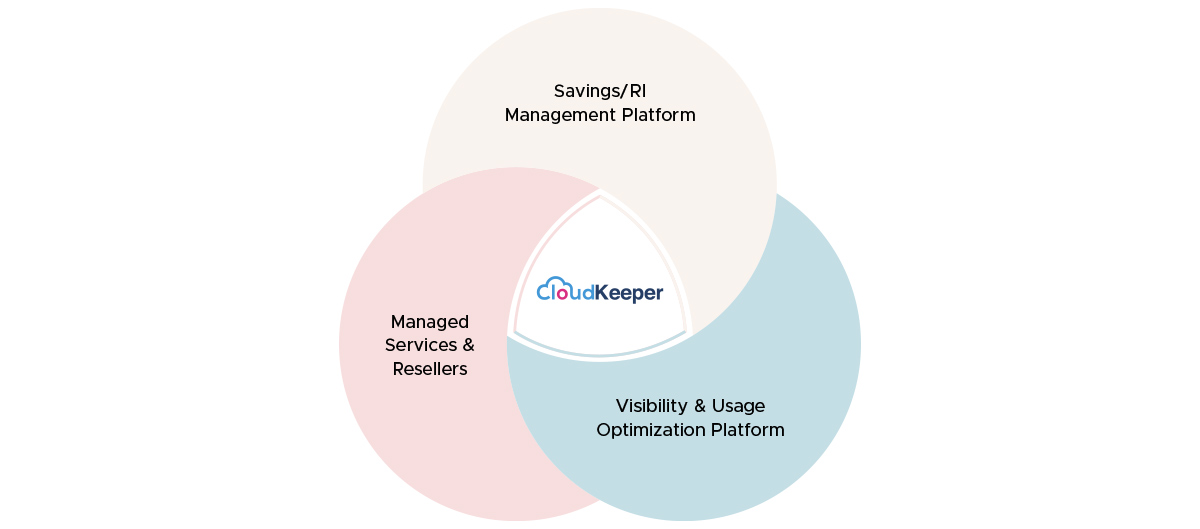
Each vendor type plays a unique role in helping organizations control cloud costs. Selecting the right mix based on specific needs can lead to efficient, sustainable cloud management and savings. As we discussed above, the research supports a growing trend of organizations prioritizing end-to-end cloud cost optimization partners.

CloudKeeper stands out as an ideal choice, delivering an integrated solution through a powerful combination of advanced cloud cost platforms and hands-on optimization services, making it a top recommendation for organizations looking to maximize cloud value and long-term savings.
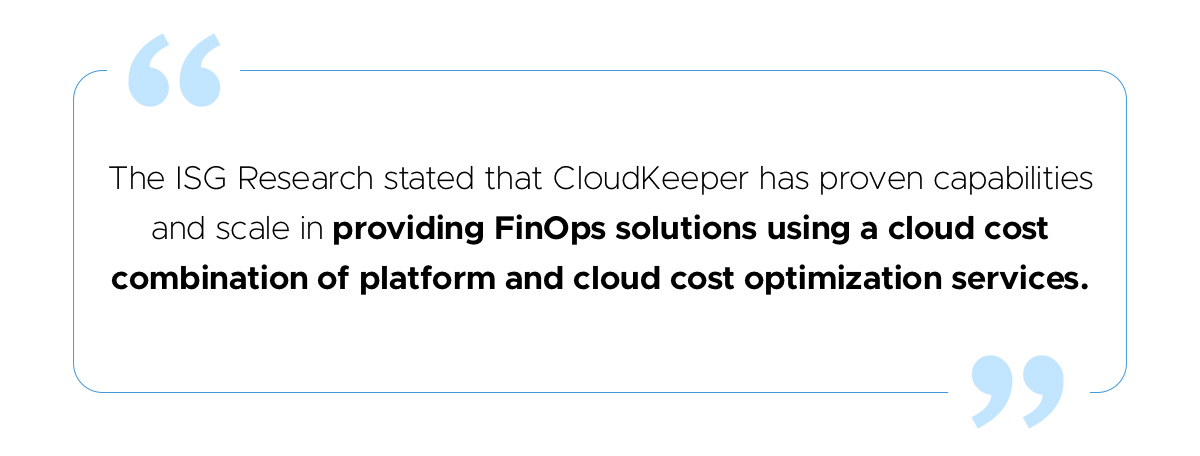
CloudKeeper is a comprehensive and certified cloud cost optimization partner for AWS, Azure and GCP. It is a one-stop destination offering a comprehensive suite of solutions and services, that provides you with everything you need for effortless cloud cost management and greater cloud cost savings.
CloudKeeper’s offerings are tailored to meet the unique needs of different customer segments and bring highly skilled and experienced cloud professionals to help you at every stage of the cloud cost optimization growth journey.
CloudKeeper AZ: Guaranteed reduction on the entire bill with access to volume-based pricing and hassle-free management of RIs & Savings Plans, without any commitments.
CloudKeeper Auto: Zero-touch, AI-based automated system for Reserved Instances (RI) and Savings Plans management offering RI & Savings Plans pricing for on-demand instances and a buy-back guarantee of unused RIs & SPs.
CloudKeeper EDP+: Maximizes your AWS EDP benefits with additional discounts, lower annual commitments, and discounted prices on AWS Support.
CloudKeeper Lens: A cloud cost visibility & analytics platform that provides insights to track, analyze, and optimize your cloud usage.
CloudKeeper Tuner: An Automated AWS Usage Optimization & Recommendation Platform that optimizes the performance of your workloads on 50+ AWS services thereby reducing the cost of your infrastructure without compromising on performance.
Speak with our advisors to learn how you can take control of your Cloud Cost
A new perspective on cloud cost optimization always reminds me how much strategy matters, whether you’re tightening budgets or improving performance. The breakdown of practical approaches—right-sizing, automation, and smarter resource allocation—shows how small changes can create real efficiency over time. While thinking about smart spending, I’ve also been checking out https://www.autobidmaster.com/en/search/salvage-clean-title/ , where exploring salvage cars feels like a surprisingly good parallel: finding high-value options without overspending. Both worlds reward those who know how to spot opportunities, reduce waste, and invest in what truly delivers long-term benefits.